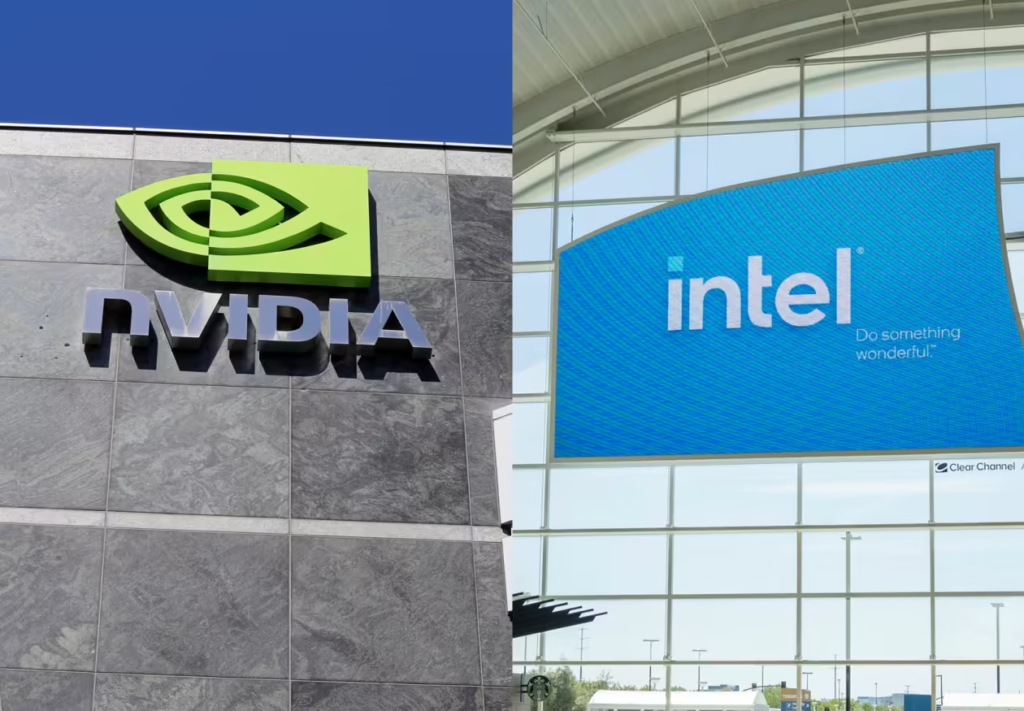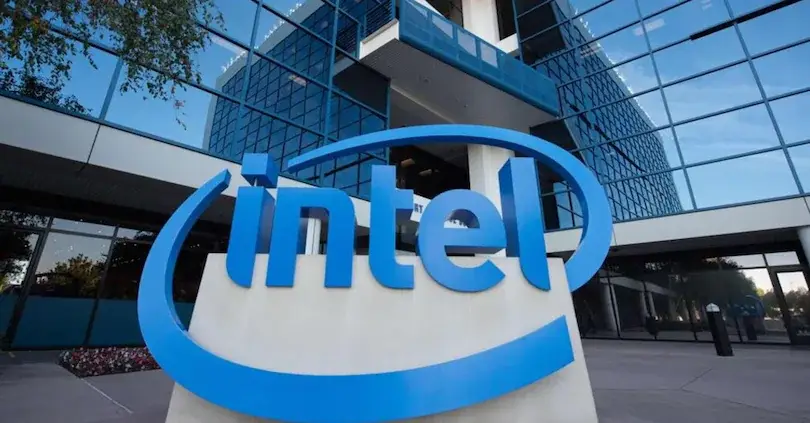In September 2025, NVIDIA invested $5 billion for a 4% stake in Intel, marking one of the most strategic semiconductor alignments in recent U.S. history.
Unlike a simple financial transaction, this move reflects a national and industrial strategy: strengthening U.S. chip manufacturing, reducing dependence on Asian foundries, and securing the AI supply chain.
For NVIDIA, it’s about diversifying production and influencing Intel’s foundry roadmap.
For Intel, it’s validation and survival, as the world’s AI leader bets on its recovery.
Beyond business, this signals a public-private alliance—a fusion of policy and profit to ensure American sovereignty in chip production and AI capability.
In late September 2025, the semiconductor industry witnessed one of the most surprising announcements in recent memory NVIDIA invested $5 billion into Intel, taking a 4% stake in the struggling U.S. chipmaker. On its face, this move seems modest compared to NVIDIA’s headline-grabbing $100 billion partnership with OpenAI. Yet in many ways, the Intel deal carries far greater weight for Silicon Valley, Washington policymakers, and the global AI race.
This is not a routine financial transaction. It is a strategic alignment designed to secure supply chains, strengthen U.S. manufacturing, and redefine the competitive dynamics of advanced semiconductors. The timing of this investment could not be more significant, and the implications go well beyond the balance sheets of the two companies involved.

Nvidia’s Dual Play | AI Leadership and Supply Chain Strategy
NVIDIA has already established itself as the uncontested leader in AI acceleration, dominating markets with its GPUs and CUDA software ecosystem. But AI leadership is not only about designing chips; it’s about securing reliable, scalable production capacity.
By investing in Intel, NVIDIA hedges against its heavy reliance on Asian foundries, particularly Taiwan Semiconductor Manufacturing Company (TSMC). Geopolitical uncertainty in the Taiwan Strait has exposed a dangerous single point of failure for the global tech economy. NVIDIA’s move signals a deliberate effort to diversify its manufacturing base, leveraging Intel’s foundry capabilities to ensure long-term resilience.
From a strategic standpoint, NVIDIA gains more than just a stake it gains influence over Intel’s direction, potential access to additional packaging and fabrication capacity, and a stronger voice in shaping the U.S. semiconductor ecosystem.
Intel’s Struggles and Why This Matters Now
Intel has faced years of missteps: manufacturing delays, leadership changes, and lost ground to competitors such as AMD and TSMC. Despite billions in government subsidies under U.S. reshoring initiatives, Intel has struggled to convert potential into performance.
The NVIDIA investment provides Intel with more than cash. It delivers validation from the most valuable semiconductor company in the world. That endorsement not only boosts Intel’s credibility with investors but also reassures customers and partners that Intel remains integral to the global chip supply chain.
For NVIDIA, choosing this moment was no accident. Intel had both the need for support and the infrastructure to make NVIDIA’s vote of confidence meaningful. This was the moment to strike: a weakened partner, government backing, and the global AI race demanding new capacity.

National Security and the U.S. Semiconductor Agenda
Semiconductors are no longer just an industry they are a national security issue. America’s dependence on TSMC, concentrated in a geopolitically fragile region, has raised alarms across Washington. A disruption in Taiwan could cripple entire sectors, from defense to healthcare.
The U.S. government has already taken steps by purchasing a stake in Intel and injecting billions into domestic manufacturing under the CHIPS and Science Act. NVIDIA’s investment aligns private capital with public policy, signaling a broader public-private alliance to secure U.S. leadership in advanced chip production.
This isn’t about corporate welfare. It’s about safeguarding economic stability and technological sovereignty. NVIDIA and Intel together present a narrative that America can produce leading-edge chips on its own soil—a message that resonates not just in Silicon Valley but also in the halls of Congress.
The Ripple Effect | AMD, TSMC, and Global AI Competition
The semiconductor industry is interconnected. When NVIDIA makes a move of this magnitude, competitors must respond. AMD, which has been eating into Intel’s market share, now faces a realignment where Intel receives not only financial support but also technical collaboration with the market leader.
For TSMC, the message is more subtle but equally powerful. Diversification by U.S. chipmakers threatens to reduce the Taiwanese giant’s asymmetric hold on global advanced-node manufacturing. While TSMC remains unmatched in production at scale, the long-term trajectory may shift as U.S. companies look to spread risk.
Globally, this signals a new chapter in the AI arms race. With U.S. firms consolidating capacity and aligning strategies, rivals in China and Europe will need to recalibrate their approaches. The NVIDIA–Intel link doesn’t just strengthen two companies; it recalibrates the competitive balance of the entire industry.

What This Means for SMBs and Enterprise IT Leaders
At first glance, a $5 billion investment between tech giants may seem distant from the concerns of SMBs or enterprise IT departments. But the implications are real. A more resilient U.S. semiconductor ecosystem reduces the risks of global supply chain shocks that could disrupt hardware availability for years.
SMBs that depend on cloud services, SaaS platforms, and affordable hardware should recognize that stable chip production means stable business operations. Enterprises seeking compliance with data sovereignty and security frameworks benefit when advanced chips are produced domestically, under U.S. regulatory oversight.
In short, while SMBs may not directly interact with NVIDIA or Intel, they stand to gain from a more secure, predictable, and diversified global supply chain.
SECITHUB | Opinion A Calculated Bet on America’s Tech Sovereignty
This move by NVIDIA should be seen for what it is: a calculated bet on the future of American technology. By placing capital and credibility into Intel, NVIDIA isn’t simply helping a struggling competitor it is fortifying the foundation of U.S. chipmaking at a time when AI, cloud, and data security dominate national priorities.
The echoes of Microsoft’s investment in Apple in 1997 are hard to ignore. That move reshaped an industry and set the stage for two decades of growth. NVIDIA’s bet on Intel could do the same, not just for a company, but for an entire nation’s technological posture.
As AI reshapes industries from healthcare to defense, the ability to produce cutting-edge chips domestically is not optional it is existential. NVIDIA has sent a message to the world: the future of AI will not only be built in the cloud but also manufactured on American soil.

NVIDIA’s investment is a strategic move to diversify manufacturing, reduce dependence on Taiwan-based TSMC, and align with U.S. government efforts to rebuild domestic semiconductor capacity under the CHIPS Act.
Intel gains more than capital it gains credibility, stability, and potential collaboration with NVIDIA’s AI ecosystem.
The investment reinforces Intel’s role as a key player in U.S. semiconductor resilience.
Both. The deal is part of a broader geopolitical strategy to secure U.S. technology leadership and minimize risks associated with global supply chain dependencies, particularly in Asia.
AMD faces renewed competition as Intel regains confidence and technical alignment with NVIDIA.
TSMC may see gradual diversification as U.S. firms strengthen domestic manufacturing alternatives.
Because semiconductor stability affects everything from cloud computing to cybersecurity.
A more resilient U.S. supply chain means fewer global disruptions, better hardware availability, and improved data sovereignty.
Yes. NVIDIA’s move represents a calculated bet on American technology sovereignty, signaling a long-term partnership between private innovation and public policy.
References
Chipmaker Nvidia to invest $5bn in rival Intel – bbc
Nvidia CEO Huang says $5 billion stake in rival Intel will be ‘an incredible investment – cnbc


